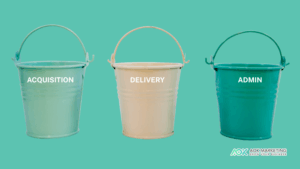Why Most Startups Burn Through Their Ad Budget (And What to Do Instead)
Let me be blunt: more marketing won’t fix a bad offer.
I’ve seen it time and again—startups pour cash into paid search, SEO, and social ads hoping to generate traction, only to walk away with empty metrics and no conversions. The problem isn’t always the marketing. Sometimes, the real issue is that the product doesn’t have demand yet.
I’ve learned this one truth the hard way: You can’t market your way into product-market fit.
But you can validate your way there.
Let me walk you through how.
Marketing Is an Amplifier—Not a Miracle Worker
When a product already has demand, marketing acts like fuel on a fire. But if there’s no product-market fit, all you’re doing is paying to amplify something no one wants. That’s an expensive lesson.
Take our experience with Strategizer. Despite having a strong brand and premium training programs, their traditional marketing tactics flopped—until we changed the strategy.
Instead of targeting cold audiences, we focused on people who had already attended their webinars. That tiny shift—$66 spent on warm leads—generated $81,000 in revenue. If we had run those ads cold? Totally different story.
Contrast that with GS1 US. The product already had a clear market fit. All we had to do was optimize targeting. We cut their cost per acquisition by over 37% and boosted revenue by 18%. That’s the power of having demand before scaling your ads.
You Can’t Fix a Broken Offer with Better Ads
Founders and marketers alike often fall into the trap of scaling too soon. The truth is, if your conversion rate is low, it’s not always the ad. It’s probably the offer.
Here’s what I tell every client before they ramp up their campaigns:
Validate first. Always.
Here’s the step-by-step process I use—and it’s saved my clients tens of thousands of dollars and months of frustration:
Step 1: Start with a Lead Magnet, Not Your Main Offer
Don’t start with the product you’re trying to sell. Start with a lead magnet—a small, specific solution that speaks to a real, immediate pain point.
– A great lead magnet builds trust and helps you identify who’s actually interested in your core solution
– It’s also a lot easier (and cheaper) to test and iterate on
If you can help someone with a small problem, they’re far more likely to trust you with the big one later.
Step 2: Run Micro Tests Before Scaling
Skip the full-scale campaign. Instead, test your assumptions in small, measurable ways:
– Does your pricing make sense?
– Is your messaging clear and resonant?
– Does your target audience actually want what you’re offering?
I call these “cheap experiments,” and they’re how you learn fast—without burning your entire budget.
Step 3: Talk to Your Warmest Leads First
Your first audience shouldn’t be strangers—it should be the people already in your orbit.
– Start conversations with people who have signed up for your email list, attended a webinar, or shown some kind of interest
– Ask the right questions: Do they want a service or a system? Which features matter most to them?
The feedback you get from these conversations will guide your offer and product development better than any agency strategy doc.
Step 4: Fix the Offer Before Scaling Ads
Before you spend big on ads, make sure the offer is airtight.
– If you’re getting clicks but no conversions, that’s a red flag
– You can only optimize what’s already working—if the offer’s broken, no amount of A/B testing will save it
Instead of throwing money at the problem, go back to the fundamentals. Clarify your promise. Refine your pricing. Tweak your positioning. Then retest.
Step 5: Use Content to Build Demand as You Go
While you’re validating and refining, don’t go silent. Use content to build curiosity and credibility:
– Publish content that’s valuable, problem-solving, and easy to consume
– Focus on thought leadership, use cases, behind-the-scenes posts, and even quick wins your audience can apply now
This is how brands like Encyclopedia Britannica and PPAI became leaders in their space—by pairing great content with paid traffic and a clear product-market fit.
Final Thoughts: Don’t Waste Your Budget—Validate First
Here’s the bottom line:
– Lead with value
– Test small
– Sell to warm leads
– Fix your offer before scaling
– Build demand with content
It’s not flashy, but it works. Most startups don’t fail because of bad ads. They fail because they scale a bad offer too fast.
You don’t need to burn through tens of thousands of dollars to find out if your product has a market. You just need to validate it strategically.
About The Author
Dave Burnett
I help people make more money online.
Over the years I’ve had lots of fun working with thousands of brands and helping them distribute millions of promotional products and implement multinational rewards and incentive programs.
Now I’m helping great marketers turn their products and services into sustainable online businesses.
How can I help you?





